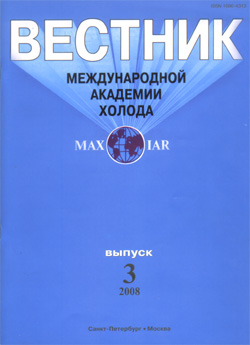
Analytical model of condensation in mini dusts

Annotation
The article deals with the problem of analytical estimation for condensation in mini ducts. Algorithm based on classicalcondensation simulation of two phase flow in bare pipe is designed; the peculiarities of micro and mini duct heat exchangers being taken into account. Method of finite differnces is used. The problem is defiend in general terms, Navier-Stokes equationi.e. partial differential equations system in Cartesian coordinate system being used as a base. Six distributed parameters of flow are used: velocity vector components (u, v, w) in3D coordinate system, pressure (p), temperature (T), refrigerant density (ρ). Main units of estimation software are designed. Ammonia refrigerant condensation is analyzed primarily. The requirement for the applicability of the model and software to any refrigerant is met. Results obtained are going to be compared with data base of experimental results.
Keywords
Постоянный URL
Articles in current issue
- Hydrolysis process of fish cannery by-products
- Mild heat sterilization for production of canned food with high vitamin content
- The use of Jerusalem artichoke for coffee substitute manufacture
- Beer technology with the use of malt from triticale
- Yeasts in modern biotechnology*
- Effect of acetic acid and enzyme preparations on bread stability and freshness
- Gas booster compressor operation at variable inlet pressure
- Exergy analysis of powdered product from thin stillage technology using steam ejector heat pump
- Device for refrigeration treatment of food with carbon dioxide recirculation
- Study of floating condensing for energy saving on refrigeration plants in tropical areas
- The influence of the compressor oil viscosity and fullerenes C60 additives in the oil on the energy efficiency of refrigeration compressor system
- Analytical model of condensation in mini dusts
- Integrated description of temperature oscillations, energy balance and cryosphere of the Earth under the influence of the solar constant variations with the use of electro-thermal analogy
- Simulation of wort heating process due to the wort distillate vapor condensation heat and stillage cooling
- Simulation of evaporation and condensation processes into the channels of regenerative heat exchangers
- Analysis of COP thermodynamic cycle LBAC with two-level absorption when obtaining negative temperatures of cooling
